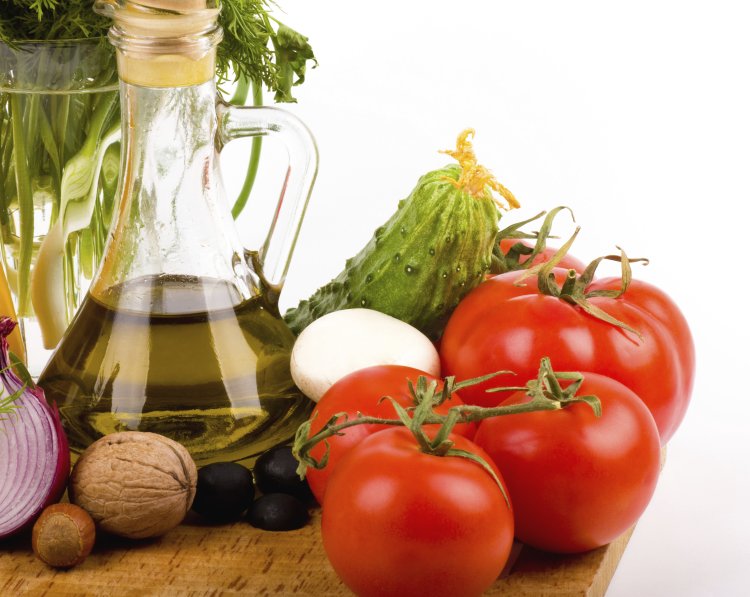Going Mediterranean: How This Centuries-Old Diet Protects the Heart
When it comes to preventing heart disease, few eating patterns have been studied or celebrated like the Mediterranean diet. It’s not a fad. It’s not the latest internet wellness trend. It’s a way of eating that has been passed down for generations in the sun-soaked countries surrounding the Mediterranean Sea. And modern science keeps confirming what tradition always knew: this diet is a powerhouse for cardiovascular health.

But what exactly is the Mediterranean diet? Why does it work so well? And how can we realistically fold it into busy, modern lives? Let’s dive in.
What Is the Mediterranean Diet, Really?
The Mediterranean diet isn’t a single recipe book or strict rule sheet, it's more of a philosophy of food and lifestyle. Picture long wooden tables, meals shared with family, plates filled with vibrant produce, and the scent of olive oil lingering in the air.
At its core, this diet is rich in:
Colorful fruits and vegetables (the kind that brighten your plate as much as your health)
Whole grains like farro, quinoa, brown rice, and whole wheat
Legumes such as lentils, chickpeas, and beans
Nuts and seeds, packed with healthy fats and protein
Seafood and fish, often grilled simply and enjoyed with lemon
Olive oil, the golden cornerstone of Mediterranean cooking

Red meat and processed foods are rare guests. Butter, refined grains, and sugary snacks hardly make the guest list at all. And while a glass of red wine might appear on the table, it’s optional not a prescription.
Equally important is what happens around the food: slowing down, savoring meals with others, moving your body daily, and avoiding constant grazing. In other words, it’s as much about how you eat as it is about what you eat.
Why This Way of Eating Protects the Heart
The heart benefits of the Mediterranean diet aren’t just folklore, they're backed by decades of research. One recent study, published in JAMA Network Open, followed over 25,000 women with no prior heart disease for an average of 12 years.
Here’s what researchers found:
Women who scored higher on a Mediterranean diet scale had a 23–28% lower risk of serious cardiovascular problems, like heart attacks and strokes.
They also had lower blood pressure, healthier cholesterol levels, and reduced markers of inflammation.
The risk of diabetes was lower, too, thanks to improved insulin sensitivity.
Essentially, this way of eating calms inflammation, balances blood sugar, and improves lipid profiles all crucial ingredients for long-term heart health.
How to “Go Mediterranean” in Real Life

Switching to a Mediterranean diet doesn’t mean you need to move to a seaside village in Greece or Italy. It just takes some thoughtful shifts. Here are simple, practical ways to get started:
1. Fill your plate with produce
That sounds daunting until you break it down:
Breakfast: a cup of berries over Greek yogurt
Lunch: a salad with two cups of greens, tomatoes, and cucumbers
Dinner: roasted broccoli, sautéed peppers, or a veggie-packed stir fry
By adding a little at each meal, you’ll hit your target without even noticing.
2. Embrace frozen produce
Frozen berries, mango chunks, and vegetable blends are often just as nutritious as fresh and they keep for months. Keep your freezer stocked, and you’ll always have the makings of a quick, colorful meal.
3. Build breakfast around plants
Start strong with two servings of fruit or veggies before noon. Try a smoothie with spinach and pineapple, or a hearty fruit-and-nut bowl.
4. Lean on healthy fats
Swap butter for olive oil. Toss salads with tahini. Snack on almonds instead of chips. Healthy fats are the secret sauce of this diet.
5. Use tools to stay consistent
Free apps like MyFitnessPal or Dr. Michael Greger’s Daily Dozen can help you track produce servings and stay motivated.
The Takeaway
The Mediterranean diet is less about restriction and more about abundance, colorful, flavorful, heart-loving abundance. It’s an approach that emphasizes community, pleasure, and balance while quietly lowering your risk of heart disease.
It’s not about perfection. It’s about small, sustainable choices: swapping white bread for whole grain, butter for olive oil, or dessert for fruit. With every choice, you’re not just feeding your body you’re protecting your heart for years to come.
What's Your Reaction?




















